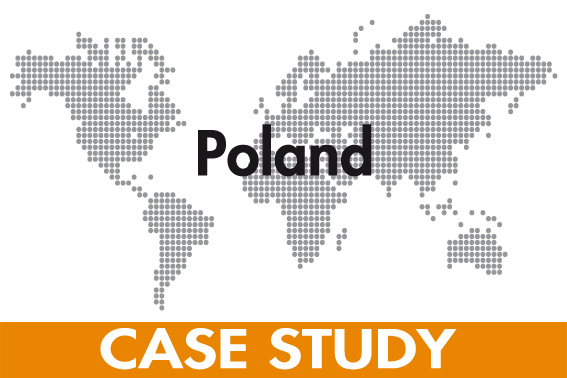Case Study: Poland doubles its poultry production

Poland has become one of the major producers of poultry meat in the European Union with production doubling over the last 10 years, reaching 2.2 million MT in 2014.
The higher output of poultry meat is being stimulated by growing domestic consumption and export demand. Although the majority of poultry meat exports are directed to the internal EU market the industry and the Polish government are trying to open new markets including obtaining eligibility to export to the United States.
Poultry meat production
Polish poultry meat production has been rising since EU accession in 2004. The increase of production stems from growing domestic consumption, as consumers substitute beef with poultry which is perceived as healthier and cheaper meat, and increasing exports mainly to other EU member states. Poultry meat production consists mainly of chicken broilers (81%), turkey broilers (14%) which are in demand for the domestic meat processing industry, and ducks and geese which are mainly exported to Western Europe, mainly Germany.
A decrease in prices for compound feeds and continuing export demand for exports are expected to stimulate poultry meat production as well in 2015. Poultry meat production is based on locally produced grains (mainly corn) and 2 million tonnes of soybean meal imported mainly from South America or the United States.
Chicken consumption growing
It is estimated that in 2014 annual consumption of poultry meat amounted to 27.5 kilograms per capita, almost 4% higher than in 2013. Poultry meat remains the cheapest meat on Polish market, which stimulates consumption. Although pork remains the most preferred meat for Polish consumers with annual per capita consumption at 39 kilograms, poultry meat is perceived as a healthy and cheap alternative for consumers.
In addition, the Polish meat processing industry specialised in production of poultry sausages and pates which imitate pork products. It is forecast that in 2015 poultry consumption will increase by additional 2% because of higher production and reduced supplies of pork. It is estimated that consumption of poultry from back yard production amounts to 6.5% of total poultry meat production.
Poultry meat exports
In 2014 the value of Polish exports of poultry meat amounted to US$1.8 billion, 21% higher than in 2013. It is estimated that in 2014 31% of Poland’s poultry meat production was destined for export. It is expected that exports will grow in 2015 because of continued demand from the EU and Asian markets. The major export destinations of Polish poultry meat within the EU are Germany, UK and Czech Republic. Outside of the EU Poland exports poultry meat to Hong Kong, China, Congo and Belarus.
Imports of poultry meat are stable and consist mainly of chicken and turkey cuts imported from Germany, UK and Hungary. In 2014 imports of poultry meat amounted to US$71 million, a 21% increase in comparison to 2013 because of higher imports of frozen chicken cuts and edible offal from Germany.
US poultry export market
Although the majority of exports are directed to the internal EU market, the industry and Polish government are trying to open new markets including obtaining eligibility to export to the United States. Polish exporters of poultry meat realise that the majority of their products will not be competitive on the US market because of their higher prices, so they will probably focus on exports of processed poultry products like sausages, pates and other ready to eat products.
On the other hand the poultry industry representatives express concerns regarding the TTIP negotiations and potential damage of the domestic industry because of price competitiveness of US poultry meat on the Polish market.
Polish egg production
In 2014 egg production in Poland amounted to 520,000 MT and was 3.8% higher than in 2013. This increase of production was stimulated by cheap feed and higher domestic consumption. It is estimated that in 2015, production of eggs will increase by another 1.8% , mainly due to low prices of feed and recovering export demand.
Polish egg exports decreased by 6% in 2014 mainly because of reduced exports to Russia, and Belarus as a result of the Russian export ban introduced in August 2014. Germany and the Netherlands remain the main outlets for Polish table eggs, while Germany, the Czech Republic, the Netherlands, and Denmark were the main outlet for processed eggs. In the first 5 months of 2015 Polish exports of table eggs were only 1% lower than in the same period of 2014, because reduced exports to Russia and Belarus were offset by higher sales to Hungary and Ukraine.













